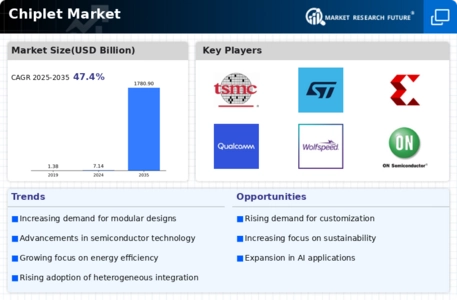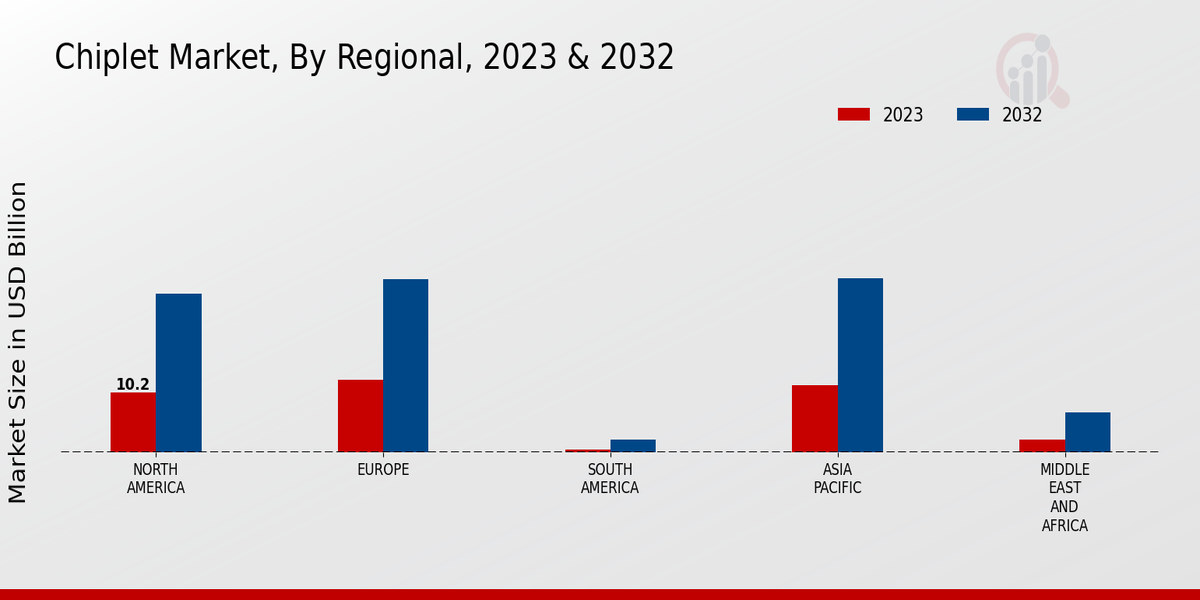Market Growth Charts
Cost Efficiency and Scalability
Cost efficiency remains a pivotal driver in the Global Chiplet Market Industry, as chiplets enable manufacturers to create customized solutions without the need for entirely new chip designs. This modularity allows for scalability, where companies can integrate various chiplets to meet specific performance requirements. For instance, semiconductor firms can combine different functionalities into a single package, reducing production costs and time-to-market. As the market evolves, the potential for chiplets to streamline manufacturing processes is likely to attract more players, contributing to the anticipated growth to 1780.9 USD Billion by 2035.
Increased Focus on Sustainability
Sustainability is becoming a crucial consideration in the Global Chiplet Market Industry, as manufacturers strive to reduce their environmental impact. Chiplets, by virtue of their modular design, can contribute to more sustainable practices by minimizing waste and energy consumption during production. Companies are increasingly adopting eco-friendly materials and processes, aligning with global sustainability goals. This focus on sustainability not only appeals to environmentally conscious consumers but also positions companies favorably in a competitive market. As the industry evolves, the integration of sustainable practices is likely to play a significant role in shaping the future of chiplet technology.
Rising Demand for Advanced Computing
The Global Chiplet Market Industry is experiencing a surge in demand for advanced computing solutions, driven by the proliferation of artificial intelligence and machine learning applications. As organizations increasingly rely on data-intensive processes, chiplets offer a modular approach to enhance computational power while optimizing costs. This trend is particularly evident in sectors such as automotive and healthcare, where high-performance computing is essential. The market is projected to reach 7.14 USD Billion in 2024, indicating a robust growth trajectory as industries adopt chiplet technology to meet their evolving computational needs.
Growing Adoption of Heterogeneous Integration
The trend towards heterogeneous integration is reshaping the Global Chiplet Market Industry, as it allows for the combination of different semiconductor technologies within a single package. This approach enhances performance and functionality, catering to diverse application requirements. Industries such as IoT and edge computing are increasingly leveraging heterogeneous integration to optimize their systems. The ability to integrate various chiplets tailored for specific tasks is likely to drive market growth, as companies seek to enhance their product offerings and maintain competitive advantages in a rapidly evolving technological landscape.
Technological Advancements in Semiconductor Fabrication
Technological advancements in semiconductor fabrication techniques are significantly influencing the Global Chiplet Market Industry. Innovations such as 3D stacking and advanced packaging technologies facilitate the integration of multiple chiplets into a single system, enhancing performance and reducing latency. These advancements not only improve the efficiency of chiplets but also expand their applicability across various sectors, including telecommunications and consumer electronics. As these technologies mature, they are expected to drive further adoption of chiplets, contributing to a compound annual growth rate of 65.16% from 2025 to 2035.












